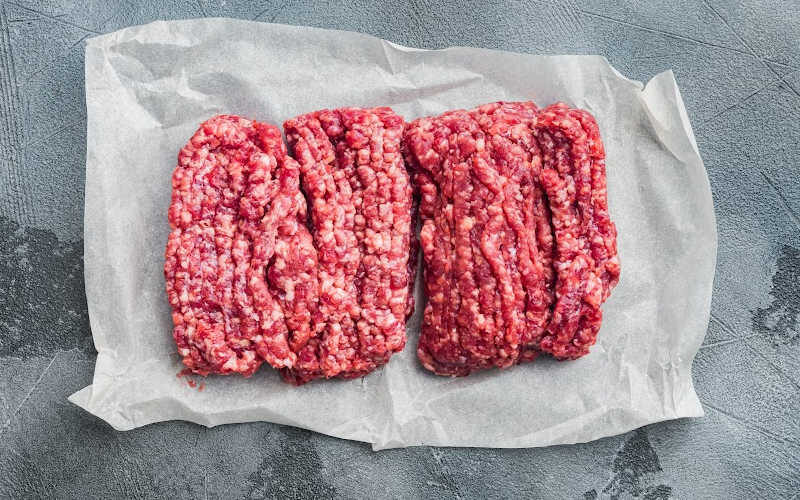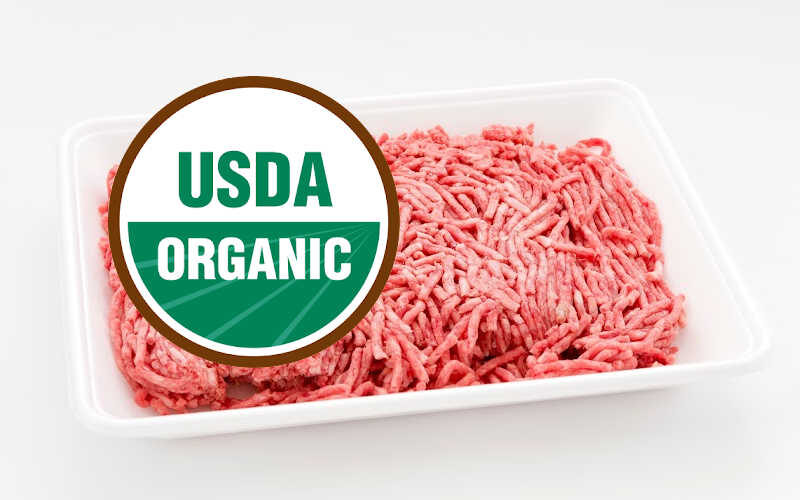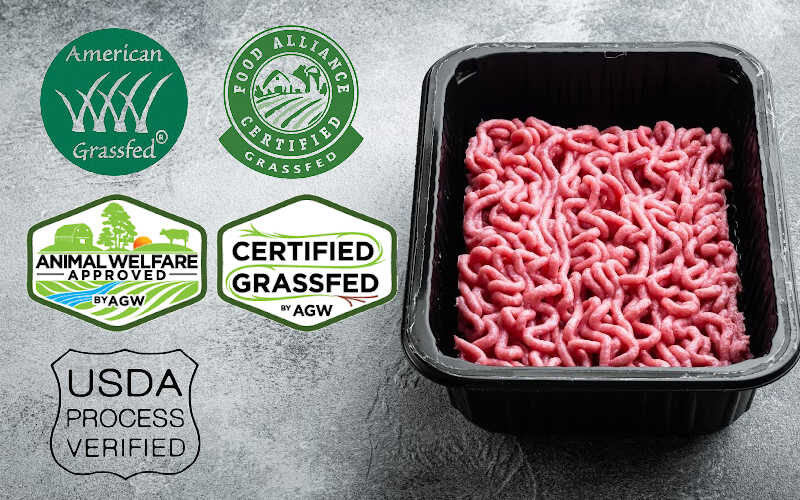What does "80/20" mean on the package of ground beef?

Ground beef is one of the most-bought items from the beef section of the local retail stores, because it is affordable, cooks quickly, and can be used in so many delicious recipes. Many families like using ground beef to make anything from classics like burgers and meatloaf to kid-favorites like mac & cheese and tacos. Recent studies show that ground beef is a key item that people wanted to keep an abundance of in their freezers.[1] This led to an additional $2.05 billion in retail sales, bringing the total for 2020 to $12.4 billion.[2]
So, let’s start with the basics and go over what else is on ground beef packages that will help you make tasty dishes.
What Kind of meat is ground beef?
There are many varieties of lean meat/fat ratio offered, but at least you can rest assured that it will be beef. Davey Griffin, Professor and Extension Meat Specialist at Texas A&M Agrilife Extension Service says, “The definition of ground beef is chopped fresh and/or frozen beef from primal cuts and trimmings. Trimmings are defined as the small pieces containing both lean and fat that come from a beef carcass as the carcass is cut or “fabricated” into beef primal, sub-primal or individual cuts. The maximum fat content in any ground beef is 30% (70% lean) by law. No water, phosphates, binders, or other meat sources may be added and still be labeled as ground beef.”
Most Commonly Asked Questions by Shoppers
Question (Q): Is “ground beef” the same as a “ground hamburger”?
Answer (A): Yes! If the label says “ground beef,” it is the same as a “ground hamburger” and, by law, it can’t have any extra fat added.
Question (Q): What part of beef is used to make “ground beef”?
Answer (A): Ground beef is often produced from leftover trimmings of steak, roast, and other meat pieces. Labels on the ground beef package will provide more information about what you’re buying. The following percentages are used as a guideline for specific cuts:

Question (Q): What does it mean when the label says “certified organic by the USDA”?
Answer (A): The “certified organic” label from the USDA must be on ground beef from cattle that were raised on organic, pesticide-free feed and had access to pasture. They also don’t have antibiotics or hormones that make the animal grow.

Question (Q): What does the label mean when it says “Grass-fed” is a term used by the USDA?
Answer (A): The USDA classifies “grass-fed” cows as those that only eat grass and forage. In this case, cows may still be treated with antibiotics, hormones, and insecticides, and they may not have always been raised on pasture.
Keep in mind that there are three third-party organizations that offer their own grass-fed certification: The American Grassfed Association (AGA), Food Alliance, and Animal Welfare Approved by AGW. If you want grass-fed ground beef that has been approved by the USDA, look for the words “grass-fed” next to the “USDA Process Verified” mark.
Learn more about ground beef, how ground beef is inspected and graded, food safety information and more from the Food Safety and Inspection Service of USDA.
How to understandand use the labels
Although most consumers like having a range of options to choose from, ground beef varieties can be confusing sometimes. The challenge is to figure out which variety is best for what you want to cook with it, and many consumers mainly focus on leanness. But there is more information on the label that can help you determine which variety is ideal for the intended use.
Keep in mind
These label rules are based on standards in the United States. Each country has its own laws and regulations regarding food labeling.
Lean Meat/Fat Ratio Basics
Ground beef is sold in different varieties, which are shown on the package by two numbers. The most common lean/fat ratio you’ll see on ground beef is 80/20. This indicates that the package of ground beef is 80% lean beef and 20% fat. Other common ratios are 90/10 and 70/30. You won’t find any pre-packaged ground beef with more than 30% fat because that’s the maximum amount of fat that can be sold in pre-packaged ground beef. So, buyers can always count on getting at least 70% lean beef when they buy beef. This makes sure that the consumer always gets the right amount of meat at each purchase.
so, why is the lean-to-fat ratio so important?
Many people including myself asked what’s the big difference between 90/10 and 80/20? After all, the difference in fat is just 10%. Right? But it turns out the fat content has a significant impact when it comes to cooking. According to Reviewed, the fat content of meat is critically important in cooking because it can drastically alter the flavor, richness, moisture, and texture of your finished meal. They also noted that one of the common mistakes new cooks make is using the leanest ground beef they can find in any recipes. But if you match the proper lean/fat ratio to the right recipe, you can make tastier dishes.
how to choose the right ground beef
- 70/30 or 75/25 beef (70% – 75% Lean):
Ground beef that is rich in fat can be used to make juicy, flavorful burgers on a griddle (or a flat pan). The extra fat keeps the patties from sticking to the pan and adds more flavor to the meat as it sizzles. Best for: Burgers on a griddle or stovetop, classic all-beef meatloaf - 80/20 or 85/15 beef (80% – 85% Lean):
80/20 is the classic ratio for a grilled hamburger because it has a good amount of fat that adds taste without having an excessive amount of fat. Best for: Burgers on the grill, chili con carne, stuffed peppers, juicy all-beef meatloaf 90/10 or 95/5 beef (90% – 95% Lean):
Extra lean ground beef, which is often ground sirloin, is ideal for recipes that combine a variety of other flavors with the meat. Best for: Tacos, Meatballs, Blended meatloaf, Sloppy Joes.
I hope you’re ready to make something really amazing tonight! Have fun in the kitchen!
Did you know?
By law, no pre-packaged ground beef can have more than 30% fat, but there’s always custom grinds at your local butcher to customize your ground beef.
[1] 2021 State of Consumer Report, Summarized and Analyzed by NCBA
[2] NielsenIQ, Answers on Demand, 2020 Beef Sales by Subcategory, Week Ending 01/02/2021








